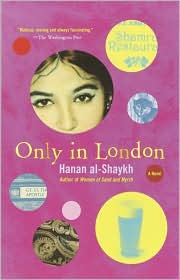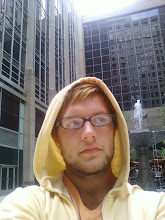
I recently finished “Only in London” by Hanan al-Shaykh and I was really interested in the way their stories played out.
Lamis, who was a recently divorced Iraqi who had moved to Najaf when she was very young, was the main character it seemed with most of the novel revolving around her and her situations. She initially went to London to get away from her parents and Dubai and she wanted to be closer to her son. She began a romantic relationship with one of the other main characters, Nicholas, and this was very detrimental to her and her situation. She felt that she shouldn’t proceed with her relationship with him, but she hadn’t been loved like this ever so she couldn’t just let go. She struggled with her identity, wanting to be more English than fearing she wouldn’t remember whom she really was. Her identity crisis takes her through many different paths and keeps the reader quite interested. I can’t say much more for fear of giving away a very good subplot!!!
Nicholas is a young Englishman who collects Arabic novelties for Sotheby’s, which is an auction house. He begins a relationship with Lamis and tries to figure out who she is, though she really doesn’t let him in. The majority of Nicholas’ story is intertwined with Lamis’ and together they form the bulk of the novel.
Amira probably has the most interesting story of all the characters. She is a prostitute who comes from a very poor family and never wishes to return to that kind of life. She visits her family several times through flashbacks in the story and her mother at one point says that she, Amira, can’t sleep with her younger sisters because they are still pure and she will taint them with her impurities. She impersonates a princess and gets away with many schemes so that she can become rich and powerful. Near the end of the story you begin to think that she may have changed her ways, but she doesn’t and she continues to lead a very promiscuous lifestyle.
Samir is a married man who begins in the story by smuggling a monkey to London for a friend’s brother. It is then made aware to the reader that Samir is homosexual, even though he is married. His story is centered on his obsession with blond boys and avoiding his wife and family who follow him to London. I found this story interesting in the fact that he showed no remorse for marrying the woman and having children with her. It was forced upon him and he wants nothing to do with them. He sends them money simply to keep them off his back and to be able to live without them. He views them as his curse and wishes to be rid of them indefinitely.
All of their stories show a different view of Arabic life in an English-dominated world, how they all try to fit in and their different endings. It was a very good read and I would recommend it to anyone who wanted to read it, though it is rather sexually graphic at points, so a mature audience is necessary.




